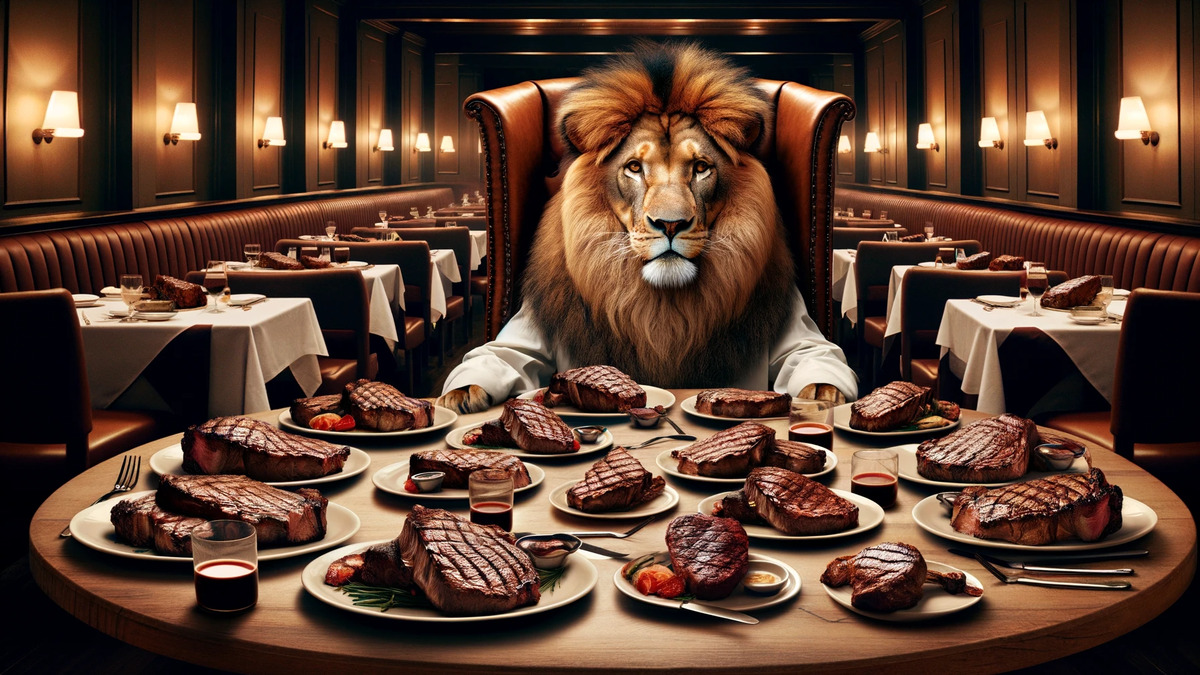From an ecological point of view, lions, known as the ‘king of the savannah’, play an important role as apex predators. The absence or presence of lions in an ecosystem causes a trophic cascade (a cascade in turn means a waterfall spilling over the top), affecting the health and balance of the ecosystem.
Although lions appear to be the enemy of gentle herbivores in part, their loss can lead to overpopulation of herbivores, which in turn can lead to overgrazing, soil erosion and reduced biodiversity.
Characterised by a unique ‘pride’ organisation, the lion’s social structure sets it apart from most other big cats, which are known for their solitary behaviour. It often consists of a coalition of related females, their offspring and males.
The powerful roar that echoes across the savannah is the common image of the lion, but nuanced roars and grunts are not the only means of communication. Their repertoire is diverse, ranging from tactile head rubs, territorial marking by scent and physical signals such as complex body language.
A lesser-known aspect is that, contrary to the common belief that lions are savannah-only animals, they can live in a variety of habitats, including woodlands, grasslands and even semi-desert areas. And they also actually live. It is dangerous to be caught off guard by the absence of lions in forests and deserts.
Sport hunting, prey depletion and retaliatory or preemptive killings to protect human livelihoods and livestock have led to significant population declines.
Although the conservation situation is precarious, ongoing conservation efforts focused on habitat protection and linkages, mitigation of human-lion conflict and curbing the illegal trade in lion parts have shown some impact.
As many may know, female lions do not have a mane. Female lions are also known to be more efficient hunters, although they are slightly smaller in stature than male lions.
Males have a prominent mane, which is not found in other large felines. Studies have shown that the size, density and colour of the mane may indicate a male’s testosterone levels, physical fitness and genetic qualities. It also serves as a defence in the event of conflict with other males, and appears to function as a multifunctional trait influenced by both natural and sexual selection.
Lions were once found in Europe and Asia, but their range has shrunk considerably due to factors such as habitat degradation, human-wildlife conflict and prey depletion.
The remaining Asiatic lion population in the Gir forests of India is an example of such a drastic decline. It demonstrates the urgent need for conservation measures to protect the genetic and geographical subset of this species.
Incidentally, the European lions, which were still around in Roman times, are all but extinct, but once ranged from the Iberian Peninsula, with Spain and Portugal, to Italy and Greece.
The three countries with the highest numbers are Tanzania, South Africa and Kenya. Tanzania, which boasts extensive protected areas such as the Serengeti National Park, has the largest population, estimated at around 15 000 animals.
Zoos with large populations include the Smithsonian National Zoo in Washington D.C. and the San Diego Zoo Safari Park in the USA, and London Zoo in the UK.
Lifespans vary and are strongly influenced by habitat. In the wild, due to factors such as competition, disease and food scarcity, lifespans range from 10-14 years. However, in captivity, free from these survival threats and with regular veterinary care, they have been known to live 20 years or more.
The record for longevity is currently held by a female lioness who lived to be 30 years old at the Racine Zoo in Wisconsin, USA.
They are not easy to keep in captivity, as they are wild by nature, require large diets and vast territories. It is illegal to keep lions as pets in many jurisdictions, and even when specialised zoos and sanctuaries keep lions, they must meet certain strict requirements in many countries.
Incidentally, lions consume a large amount of food, approximately 5 kg for females and up to 7 kg for males per day. Of course, they also require extensive veterinary care.
The mane grows throughout life, but at a significantly slower rate as the animal gets older. Environmental factors such as local climate also affect the length and thickness of the mane. For example, in hot climates, lions’ manes are often smaller and thinner, which seems to help keep them cooler.


コメント